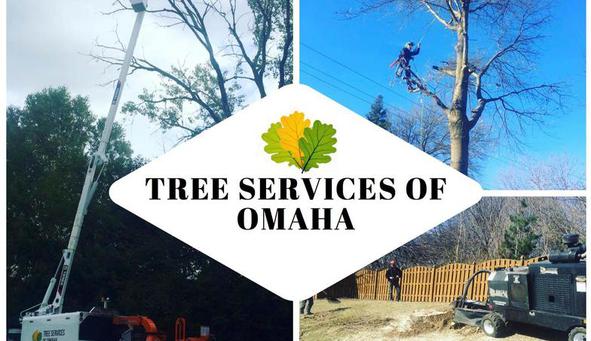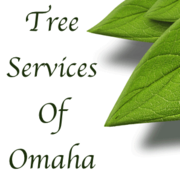How To Recognize and Prevent Tree Hazards
by David Steg on 10/01/14
How to Recognize - and Prevent - Hazard Trees
Worrying about hazards has resulted in the unnecessary removal of many trees. Although the problem of hazard trees needs to be addressed by every landowner and land manager, removal should be an act of last resort. Instead, some technical knowledge and a lot of common sense are the keys to preventing injuries, property damage and lawsuits due to unsafe trees.
There once was a young arborist who was placed in charge of the trees on a beautiful college campus. Most of the trees under his care had been planted decades before, then carefully nurtured over the years to provide shade and lend grace to the academic setting. Not long after the new arborist arrived, trees began being felled and a "hit list" of others was presented to the faculty committee that oversaw such matters. Soon, the arborist was known as The Grim Reaper, a title out of character in a profession dedicated to prolonging the lives of trees! After some investigation, it was learned that the arborist had been to a training session about hazard trees. The course had done such a good job in some respects that the man's sharpened eye saw potential trouble in nearly every tree. The course had frightened him so badly about potential injuries, property damage and, above all, liability suits, that he viewed tree removals as the only course of action. Old poplars in a park, a pear tree by a dorm and dead snags in the arboretum were viewed the same-and all were scheduled for removal. In this issue of the Bulletin, some of the signs that warn about dangerous trees are presented, as well as a reminder that those of us who own or manage trees are, indeed, responsible for the safety of people and property in the vicinity of our trees. But you will find no photos of dented cars or smashed houses. Scare tactics will backfire. The better approach is to learn to analyze the setting, consider the risks and benefits, and carefully plan for actions that prevent or correct hazards whenever possible. It is toward that end that this issue is dedicated. |  |
Recognizing Tree Hazards
When damage, injury or death occurs because of a defective tree, the law usually holds the tree's owner responsible. (In a public place such as a park, this responsibility shifts to the managers of the tree.) Under the law, it is your duty to exercise care, good judgment, caution, and foresight by inspecting your trees regularly and recognizing situations that may cause them to break or fall.
What is a Hazard Tree? | What is Not a Hazard? | |
 |  | |
| A hazard tree has a structural defect that may cause the tree or a portion of the tree to fall on someone or something else of value. | This is a legal grey area, but for a tree to be a hazard, a "target" must be within the falling distance of the tree or its part that fails. A "target" means people, vehicles and structures. Therefore, a defective tree in the woods or an open field or away from paths in an arboretum need not necessarily be considered a hazard. SeeBulletin No. 13 for a case to be made on behalf of leaving old or dead trees for wildlife. |
To look for hazardous conditions, inspect each tree systematically. Start by scanning the top, using binoculars if necessary. After reviewing the crown, look downward along the trunk, then carefully examine the root zone. On the following pages are some important signs to watch for in your visual inspection.
1. Examine the Top and Crown
| Differences In Species Some species are simply more brittle thanothers. This is one reason why city ordinances sometimes prohibit or discourage trees such as willows, box elders and silver maple. Plant these trees only in open areas. If they already exist on your property, a minimum precaution would be to avoid locating play areas or patios beneath these trees. |  | Are There Dead Branches? Loggers call these "widowmakers" and treat them with great respect. Homeowners should do likewise. Dead limbs are an accident waiting to happen. They can fall in the slightest breeze, when a mower bumps the tree, or a child climbs in it. They sometimes give way even on a calm day. Dead limbs are a red-flag signal for prompt action. |  | |
 | What's the Tree's History? Sometimes past events warn of potential trouble. For example, previous topping will almost invariably result in weakly attached regrowth, Similarly, broken branches with stubs un-pruned, or sprout-like regrowth after storm damage, set the stage for breakage. Recent, seemingly unexplained loss of large limbs may also be a sign of internal problems. |  | Do Some Branches Cross or Rub? Branches that cross or rub invariably lead to weak spots. These should be pruned off as soon as they are spotted, and the smaller the better. | |
| Is the Tree Dead or Dying? With the exception of trees for wildlife where structures or human traffic are absent or rare, dead and dying trees should be promptly removed. Felling a large tree is extremely dangerous. Call an expert to do the job. |  | How Vigorous is the Tree? Evaluating a tree's vigor is somewhat subjective. However, experts say it is the surest early warning that there is a serious health problem in a tree. Vigor is reflected in the amount of leaf cover, and leaf size, color and condition. By comparing your tree with others of like size, you will be able to detect a less vigorous crown. |  |
Why Branches Break  |  |  |
| Large limbs can be weakened by rubbing, unrepaired storm damage, or poor pruning of side branches. The limb responds by forming barrier zones around each wound. These are weak spots that sometimes snap under the pressure of wind or ice. | A break at the branch collar is part of normal self-pruning, often caused by decay. Regular inspections for decay at branch junctions, followed by pruning, can prevent unexpected breakage. | Supporting trunk tissue sometimes gives way under stress. More research is needed to determine exactly why, but allowing large, horizontal limbs to develop may put unreasonable demands on the tree. |
2. Check the Trunk
- Watch for Forked Trunks
Forked trunks are signals of potential weakness, especially if one side of the fork grows outward instead of upward like the other. Narrow-angled forks are also prone to infection, often indicated by sap or pitch being exuded. Early pruning of one side of the fork can prevent these problems; cables or braces are corrective actions taken by arborists to strengthen the fork in trees of higher value. 
- Look for Signs of Decay
Clues to internal decay of the trunk or large branches are cavities, disfiguration (cankers) and the fruiting bodies of fungi (conks). Sometimes there are no outward indications. Arborists then use one of the methods shown below to check for decay.
According to the USDA Forest Service, internal decay does not automatically render a tree unsafe. Working with pines, the Forest Service determined that if the amount of sound wood surrounding internal rot exceeds that established by the line on the graph, the tree can be considered relatively safe from failure.

- What About Balance?

Leaning or lopsided trees present more of a hazard than those growing vertically, but if a tree has always grown off center, it generally is not an undue risk. However, any sudden lean indicates breakage or weakening of support roots and should be cause for alarm and immediate action.
- Examine Wounds and Cracks

Any trunk wound is an opening for decay. Wounds extending into the ground, including lightning scars, should be of particular concern and examined regularly. Some cracks, such as frost cracks, have little effect on the strength of a trunk. However, if two vertical cracks appear on opposite sides of the tree, it can be a sign of root injury or breakage. It is usually associated with a circumferential separation of wood internally and is extremely dangerous.
Tools Used by Arborists to Check for Internal Decay | ||||||
 |  |  |  | |||
| This method is harmless to the tree but relies on differences in sound as the tree is struck. | A small core of the tree about 1/4" thick is removed and examined. This causes some wounding. | An electric drill and 1/8" bit can reveal rot through changes in drilling speed or ease, and condition of the wood chips extracted. | This instrument uses a pulsed electrical current to measure the resistance of wood, and thereby the presence of decay. Drilling is necessary. | |||
3. Don't Forget the Roots
Roots are an important cause of trees becoming hazardous. Tree scientist Pascal Pirone reported that in his 30 years of examining tree problems more than half were traced to root disease or injuries.
- Any Signs of Root Decay?

Root decay is often insidious and difficult to detect. Noted tree expert Dr. Alex L. Shigo calls the organisms that cause root problems "the sneaky fungi." Sometimes their work in weakening support roots goes completely unnoticed because the smaller feeder roots may go right on absorbing water and lawn fertilizer. Then, suddenly, one day the tree falls over! To detect root decay, look carefully for "mushrooms" on or near the base of the tree. If found, or if root trouble is suspected, have an arborist dig up some roots to sample for decay organisms.
- Are Any Roots Severed?
Trenching or construction within the root zone is a major cause of hazard trees. The problem is two-pronged. First, severed roots lose their ability to support the trunk and crown, especially if located on the windward side of the tree. Second, severed roots are open wounds that invite decay organisms. See Bulletin No. 7 for ideas about saving trees during construction. 
Note: Allowing roots to be cut, then watering and fertilizing to aid recovery is not a guarantee against decay. The reason is that decay organisms thrive on this treatment, too!
A Checklist for Preventing Hazard Trees
- Inspect your trees carefully several times each year and in all seasons. Annually, have a qualified arborist (See Bulletin No. 6) inspect your trees and provide you with a written report.
- Avoid planting brittle species where falling limbs could injure people or property. Some examples:
- Silver Maple
- Lombardy Poplar
- Box Elder
- Willows
- Prune trees when they are young (Bulletin No. 1) and regularly thereafter.
- Use correct pruning methods, always making the pruning cut outside the branch collar.
- Don't allow trees to be topped!
- Always plant the right tree in the right place. For example, avoid planting large-growing trees under power lines, or too close to your house, and make sure the species selected matches the soil and other site characteristics. See Bulletin No. 4 for other ideas.
- Water deeply during dry periods, slowly applying at least 1" of water.
- Erect barriers around or slightly beyond the dripline of trees during construction. Insist that these root protection zones be honored by construction workers.
- Consider cabling or bracing weak forks or branches in older trees of high value. This is work for a professional arborist.
- Do not plant trees with narrowly-forked stems.
- Where a high value tree may be suspected of developing into a hazard, use landscaping to keep people at a safe distance. This may require techniques such as re-routing walks, moving patio furniture, or planting shrubs and hedges as barriers to foot traffic.
Remember: A healthy, vigorous tree that receives regular care is less likely to become a hazard than one that is ignored. Prevention is the best solution to the tree hazard problem.



